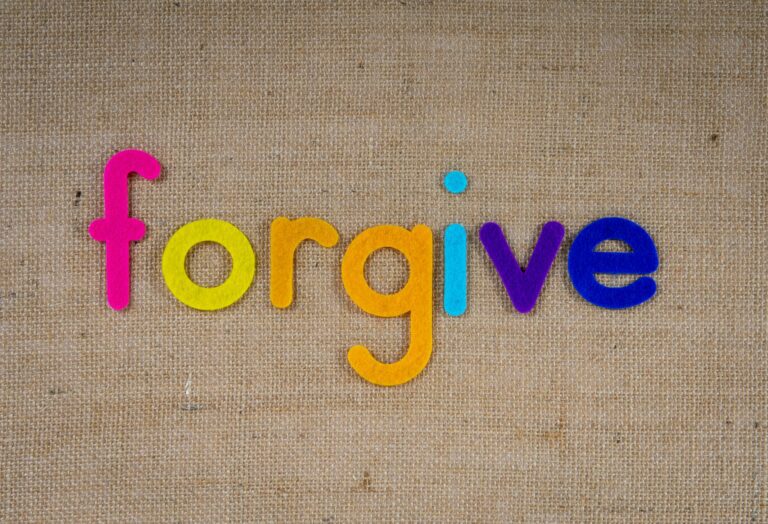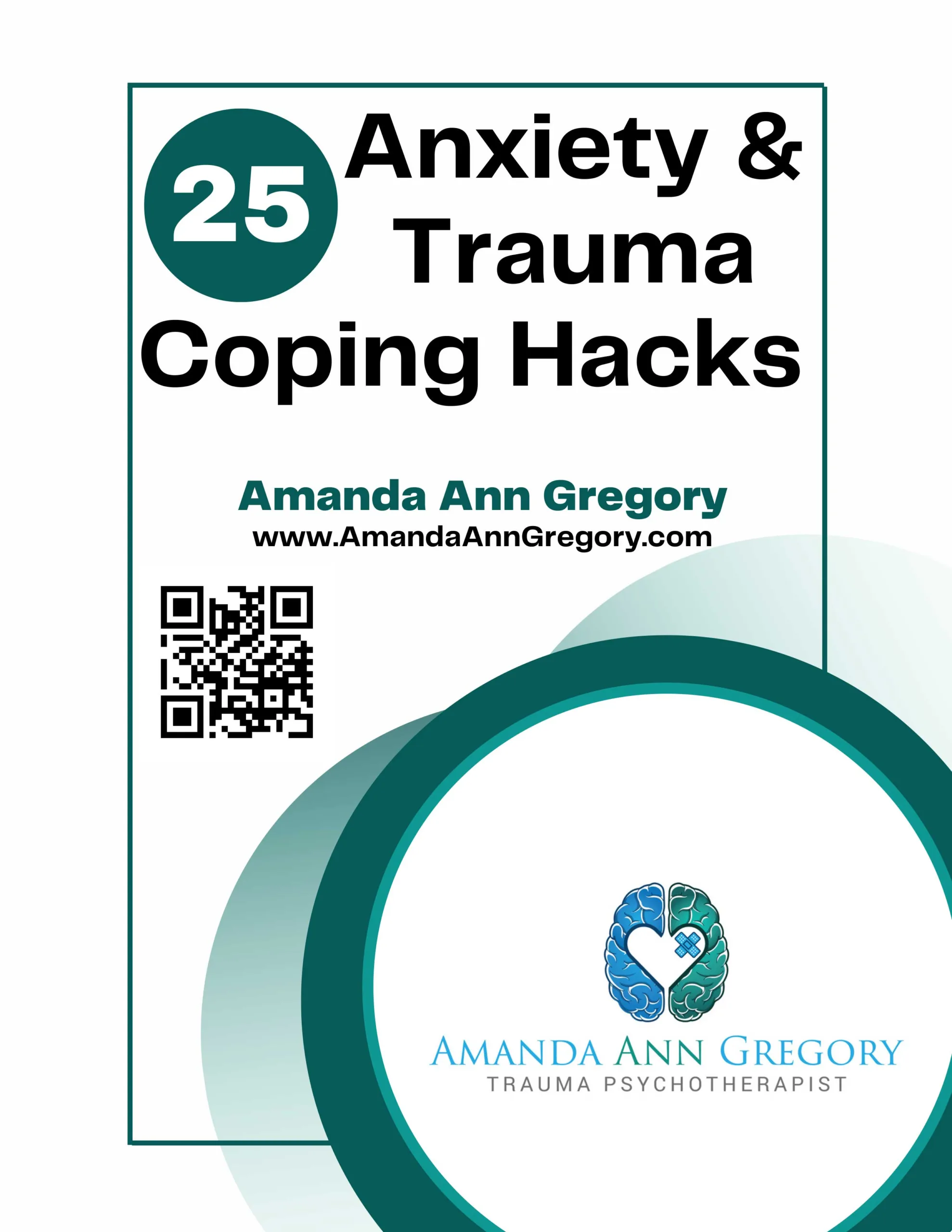As a trauma psychotherapist and trauma survivor, I’ve researched complex trauma therapy for years, trying to find the most effective techniques for myself and my clients. In my book, You Don’t Need to Forgive: Trauma Recovery on Your Own Terms, I describe 20 methods to recover from complex trauma, and in this blog, I will highlight three of them.
Neuroaffective Relational Model (NARM)
Disrupted attachment frequently accompanies complex trauma, making it essential to address both simultaneously. The NeuroAffective Relational Model (NARM) is a psychotherapy method designed to treat complex trauma and disrupted attachment together, utilizing a relational framework. “The practitioner and client work together in a shared relational field to heal the body-mind, helping clients with nervous system re-regulation as well as connection to self,” explains NARM master practitioner Maureen Kebo. “The model is not organized around what is broken but rather works with a client’s strengths and builds on this over time, assisting in the re-regulation process and allowing access to a self that was previously buried in trauma. This fosters a deeper connection to the authentic self as well as to others.”[i]
NARM takes a non-pathologizing approach to trauma, focusing on embracing and promoting the survivor’s agency. “Unfortunately, we are often unaware of the internal roadblocks that keep us from experiencing the connection and aliveness we yearn for,” writes NARM developer Laurence Heller. “These roadblocks develop in reaction to developmental and shock trauma and the related nervous system dysregulation, disruptions in attachment, and distortions of identity. The goal of the NeuroAffective Relational Model (NARM) is to work with these dysregulations, disruptions, and distortions while never losing sight of supporting the development of a healthy capacity for connection and aliveness.”[ii]
For more information about NARM, visit www.narmtraining.com.
Sensorimotor Psychotherapy (SP)
Sensorimotor psychotherapy (SP), like NARM, was specifically developed for trauma and attachment recovery. Created by Pat Ogden, SP draws on somatic, attachment, and cognitive theories, the Hakomi method, and neuroscience. “SP welcomes the body as an integral source of information which can guide resourcing and the accessing and processing of challenging, traumatic, and developmental experience,” explains the Sensorimotor Psychotherapy Institute.[iii] “Sensorimotor psychotherapy emphasizes helping clients develop resources within themselves to self-regulate affect, or to move out of the fight/flight/freeze response, and into a higher-functioning mode where they can think clearly and feel appropriately.” “Clients can become less reactive and more proactive in their relationships, work, and families,” writes sensorimotor psychotherapist Julie Westlin-Naigus.[iv]
What do typical SP interactions look like? Imagine discussing a traumatic experience when your therapist asks you to remember a few moments before the event, encouraging you to be mindful of the sensations in your body. Together, you will explore whether there is a physical movement you wished you could have made before, during, or after the event but didn’t. Your therapist will then support you in safely engaging in that movement. The goal is to enable you to move as needed, creating an experience that can positively influence your nervous system.
For more information about Sensorimotor Psychotherapy Institute, visit www.sensorimotorpsychotherapy.
Pelvic Floor Physical Therapy
You may be surprised by this one. I was. I had never heard of pelvic floor physical therapy as a recovery method for trauma until my clients informed me. They reported positive changes, such as decreased physical pain, improved sexual health, and an increased ability to physically relax after participating in this therapy. “Your pelvic floor is a muscular sheet at the base of your pelvis,” explained pelvic floor physical therapist Amy Healy. “The muscles go from the pubic bone in the front, the sit bones on the sides, and the tailbone in the back. When the muscles are tight, the muscular sheet can be rigid and flat. When the muscles are at an optimal length, they look like a hammock.” Trauma can impact your pelvic floor, which Healy calls “the natural guardian.” “Think of it as the first line of defense—against trauma in your body. When your pelvic floor reflexively tightens up during trauma, you might ultimately feel that tightening impact all sorts of functionality and day-to-day activities, including (but definitely not limited to) painful sex.”[v]
The goals of pelvic floor physical therapy include improving core stability, increasing control over urination and bowel movements, and enhancing sexual function. This is achieved by strengthening and/or relaxing the pelvic floor muscles through physical interventions such as Kegels, manual therapy, biofeedback, electrical stimulation, and dilators. This type of physical therapy isn’t just for women; men have also benefited. In fact, it was my cisgender male clients who brought this recovery method to my attention.
For more information about pelvic floor physical therapy visit The Academy of Pelvic Health Physical Therapy at www.aptapelvichealth.org.
Expressive Arts Therapy
Are you tired of talking about your trauma? Or perhaps you’ve tried talk therapy and found it wasn’t beneficial? If so, you might want to consider expressive arts therapy, which is “the purposeful application of art, music, dance/movement, dramatic enactment, creative writing, and imaginative play—[it] is largely a nonverbal way of self-expression of feelings and perceptions,” writes expressive arts psychologist Cathy A. Malchiodi.[vi] This type of therapy is highly experiential, meaning it focuses on you having an experience rather than discussing one. For instance, you might notice changes in your emotions and thoughts while engaged in writing. An expressive arts therapist may not need to delve into the specifics of your writing or your experience because the change has already occurred. Malchiodi notes that expressive arts therapy is “action-oriented and taps implicit, embodied experiences of trauma that can defy expression through verbal therapy or logic.”[vii]
As a participant in expressive arts therapy, you may engage in interventions such as self-holding practices, bilateral drawings, body mapping, psychodrama, and mirroring. “People may think that expressive arts therapy is just for kids, but in the last twenty-five years, I have used this dynamic modality with every age,” explained expressive arts therapist Eve Brownstone. “With children, I’ve facilitated imagination games and art therapy. With teens, I have facilitated role-playing groups in which they process relationship issues and writing or journaling exercises to promote insight. With adults, I have used various interventions, including psychodrama. I have found that clients of all ages still love to play and create.”[viii]
For information about expressive arts therapy, visit the International Expressive Arts Therapy Association at www.ieata.org.
There are many effective therapies to address complex trauma. The key is finding the therapies that work best for you.
Purchase my book, You Don’t Need to Forgive: Trauma Recovery on Your Own Terms
Sign up to get your Free eBook: 25 Anxiety & Trauma Coping Hacks
Hire me to speak at your event! Contact Me
[i] Maureen Kebo (NARM master practitioner), in discussion with the author, August
2023.
[ii] Laurence Heller and Aline LaPierre, Healing Developmental Trauma: How Early
Trauma Affects Self-Regulation, Self-Image, and the Capacity for Relationship (Berkeley,
CA: North Atlantic Books, 2012), 1.
[iii] Sensorimotor Psychotherapy Institute, “What Is Sensorimotor Psychotherapy?”
accessed February 25, 2024, https://sensorimotorpsychotherapy.org/about/.
[iv] Julie Westlin-Naigus, “What Is Sensorimotor Psychotherapy?” accessed February
26, 2024, https://www.juliewestlin-naigus.com/new-page.
[v] Kelley Boymer, “How Pelvic Floor Therapy Helped Heal My Trauma,” Jess
Ann Kirby (blog), June 23, 2022, https://www.jessannkirby.com/how-pelvicfloor-
therapy-helped-heal-my-trauma/.
[vi] Cathy A. Malchiodi, Trauma and Expressive Arts Therapy: Brain, Body, and
Imagination in the Healing Process (New York: The Guilford Press, 2020), 1.
[vii] Cathy A. Malchiodi, Trauma and Expressive Arts Therapy: Brain, Body, and
Imagination in the Healing Process (New York: The Guilford Press, 2020), 1.
[viii] Evan Brownstone (expressive arts therapist), in discussion with the author, August
2023.





